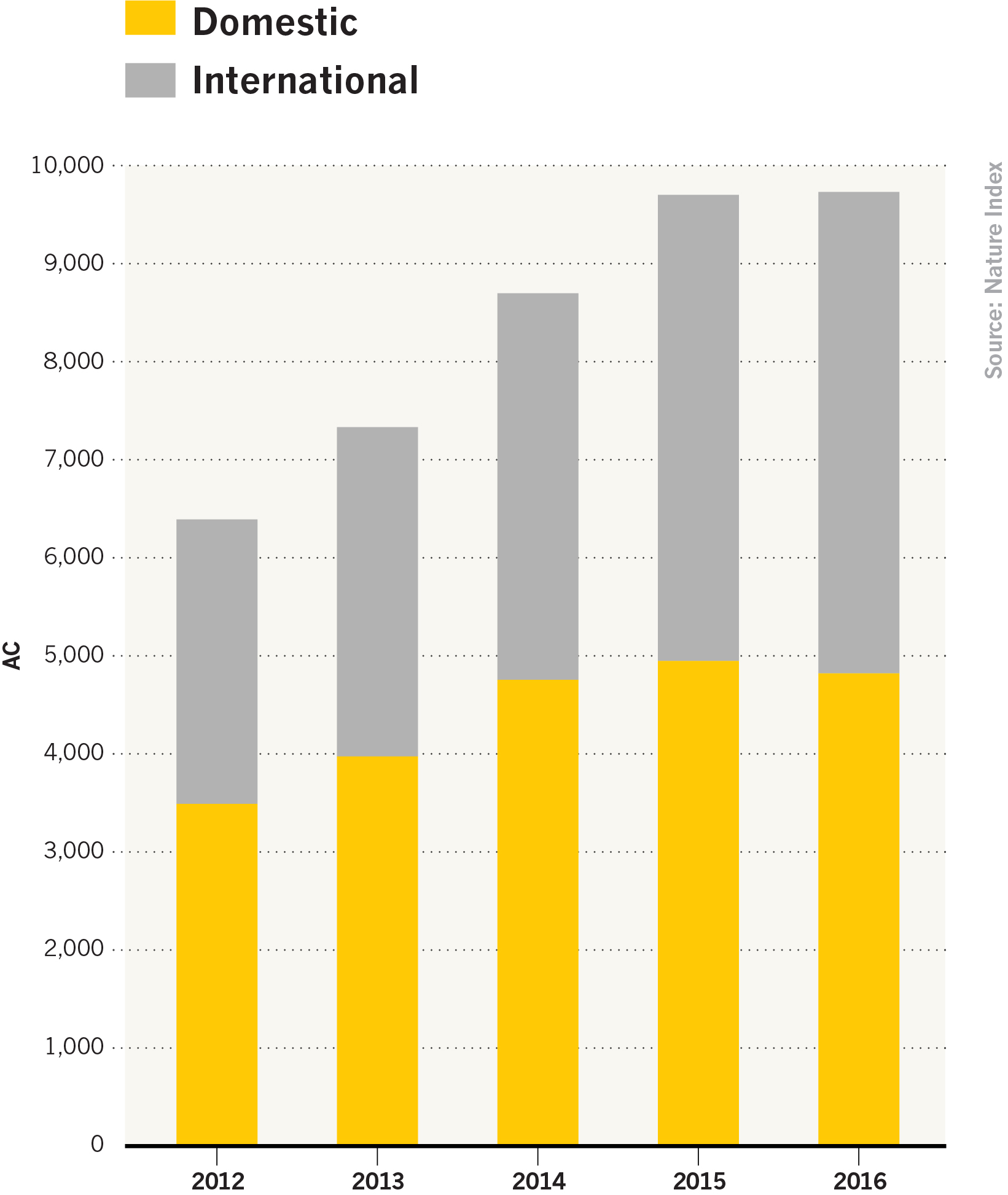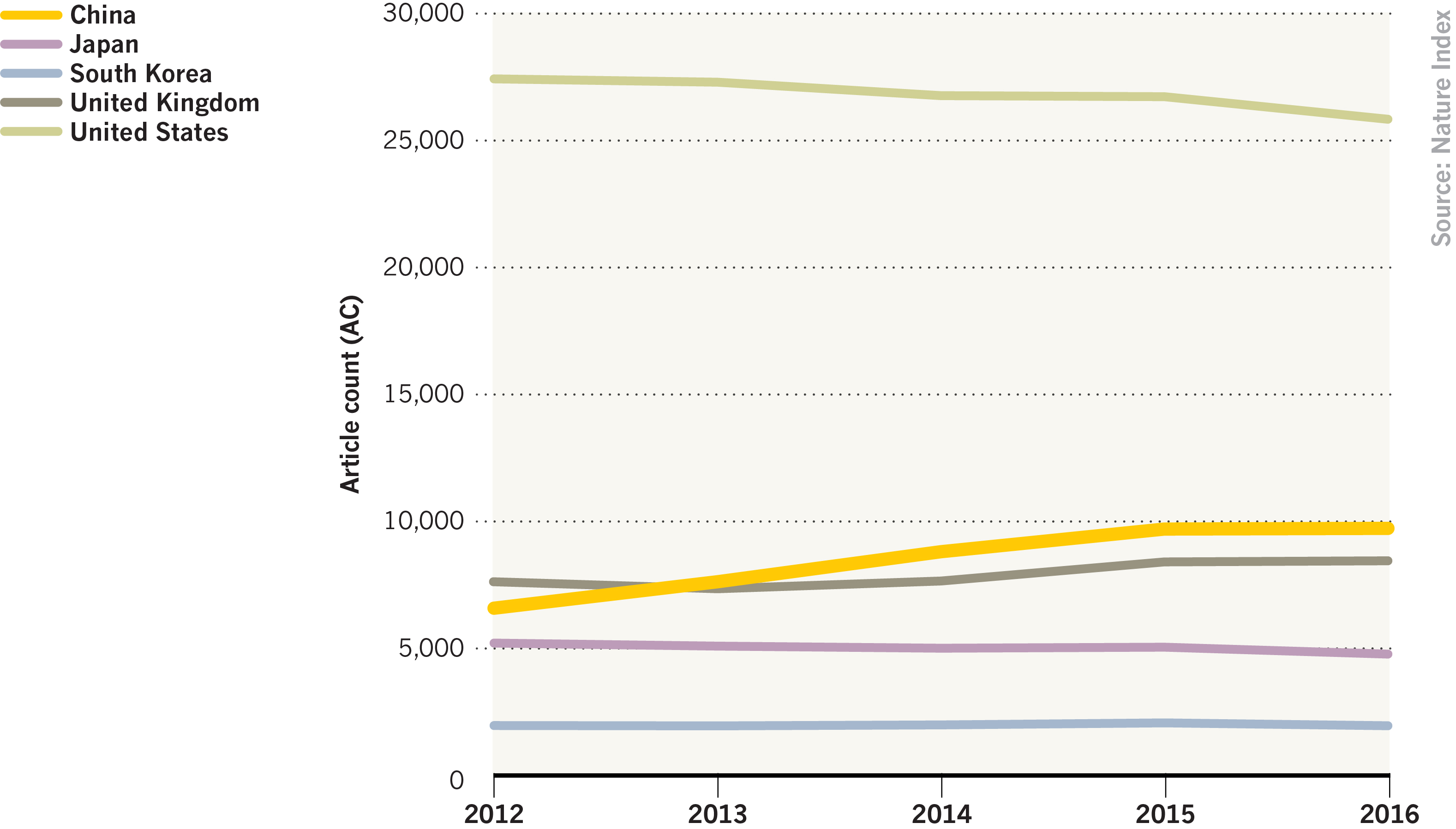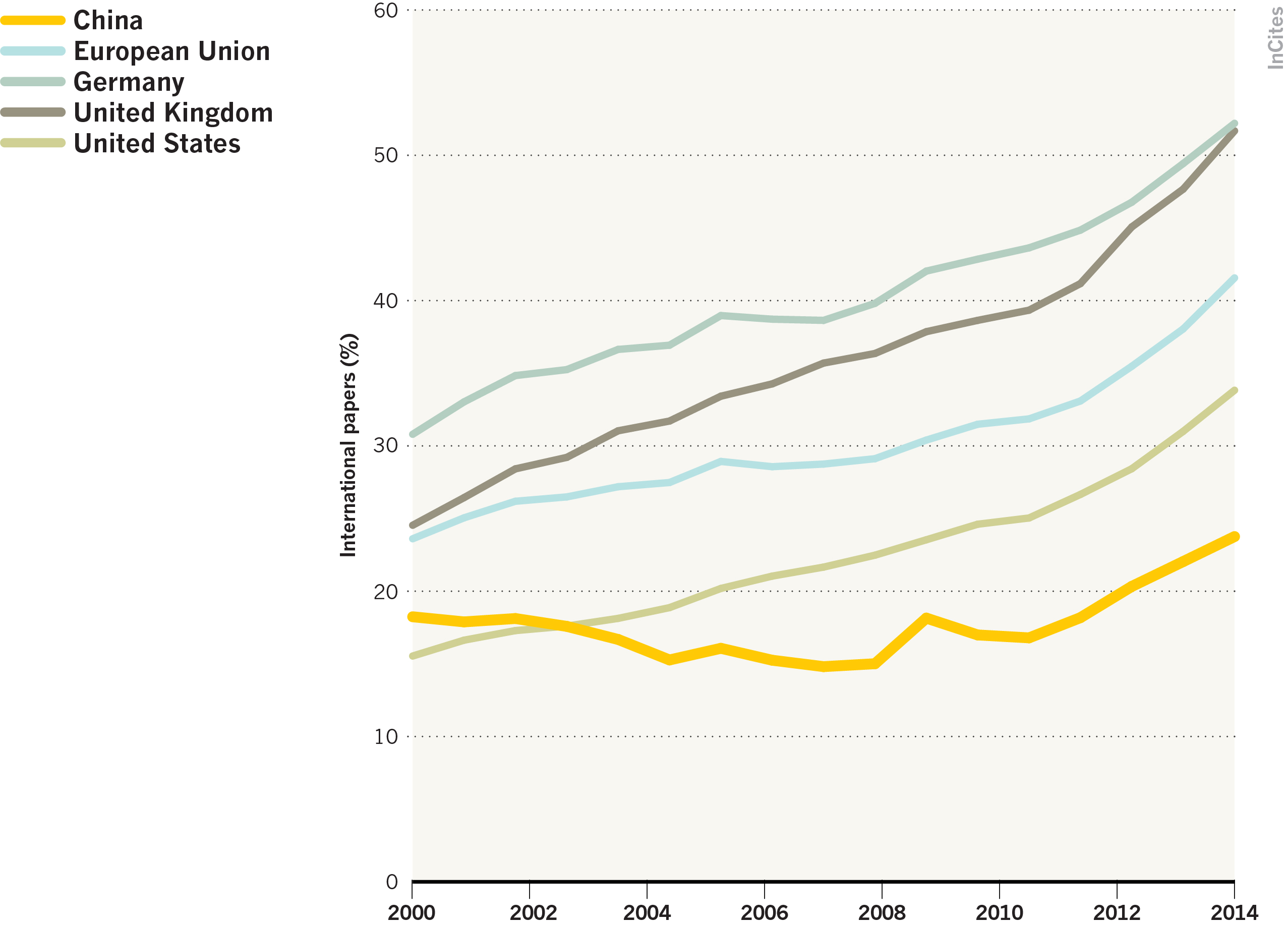The number of high-quality natural science papers by Chinese academics that were co-authored with international collaborators has surpassed those produced solely within China for the first time, a new report has indicated.
According to Nature Index – which tracks the author affiliations of research articles published in a group of 68 high-quality natural science journals – more than half of publications by Chinese researchers in 2016 were joint-authored with scholars outside the country.

The data show that the Institute of High Energy Physics of the Chinese Academy of Sciences and the National Institute for Nuclear Physics in Italy had the strongest bilateral collaboration between a research institution and one overseas, followed by Peking University and Harvard University. Meanwhile, Germany’s Max Planck Society was involved in five of the top 10 strongest international collaborations involving a Chinese institution, Nature Index said.
Overall, China’s total number of articles in the index has increased since 2012 to almost 10,000, while other countries such as Japan and the US have seen a decline.

As well as data from Nature Index, the report on China also analysed the country’s performance in the larger Web of Science database, produced by Clarivate Analytics.
This shows that although papers co-authored by Chinese and overseas academics now make up more than half of high-quality research as defined by Nature Index, the level is much lower for all papers indexed by Web of Science at under 25 per cent.

“The slower growth rate in papers from international collaborations was because China’s overall research output had grown so dramatically,” said Yue Weiping, chief scientist of China for Clarivate Analytics.
“This slower rate may be attributed to language barriers and allocation of institutional resources. Researchers in top universities have more opportunities or resources to collaborate with peers worldwide.”
This last point is illustrated by the elite Chinese universities that feature in the list of the strongest international collaborations for papers in Nature Index.
Both Peking and Tsinghua universities, the highest ranking Chinese institutions in the Times Higher Education World University Rankings, appear six times each in the top 30 list of bilateral collaborations with institutions outside China.
Find out more about THE DataPoints
THE DataPoints is designed with the forward-looking and growth-minded institution in view
Register to continue
Why register?
- Registration is free and only takes a moment
- Once registered, you can read 3 articles a month
- Sign up for our newsletter
Subscribe
Or subscribe for unlimited access to:
- Unlimited access to news, views, insights & reviews
- Digital editions
- Digital access to THE’s university and college rankings analysis
Already registered or a current subscriber? Login







